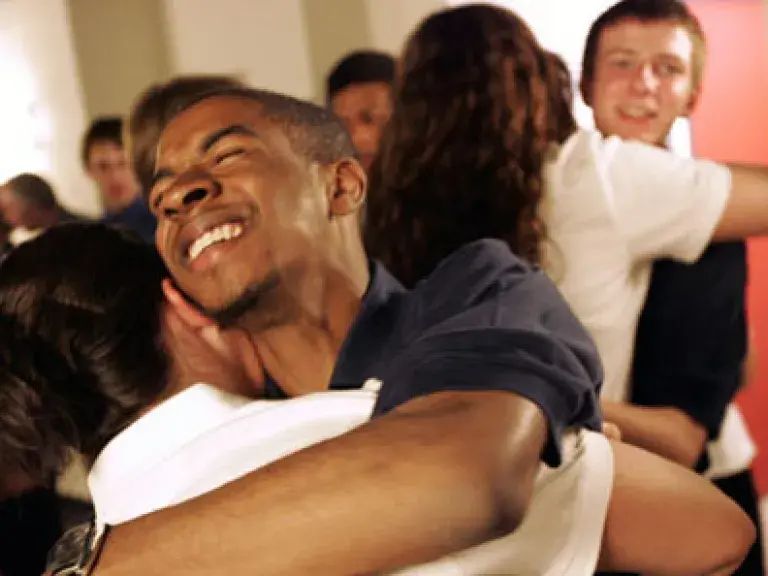
A few months ago, I went to The Washington National Cathedral for the Cathedral Choral Society’s Carmina Burana Sing-Along where hundreds of people came to try their hand at the "O Fortunas" and "Floret Silvas." When asked from the podium how many people had actually sung the work before, a surprisingly small number raised their hands. The participants were primarily audience members who had heard Carmina performances and wanted a chance to try it themselves. The sheer joy they exuded as they came together, elbow to elbow, to do their best with the challenging bundle of words and rhythms, was plain to see and hear.
What was most striking to me was how they sang with each other, conveying a kind of community that made the audience feel a part of their performance as if we were all in it together.
I often talk about the value of choral singing as a collaborative endeavor, where diverse groups of people sing with each other to produce something that would be impossible for any individual to do alone. Professional and amateur singers include a colorful array of participants that is a bright reflection of our world: black, white, Latino, and Asian; Catholic, Protestant, Muslim, and Jewish; children, teens, adults, and seniors; Conservatives, Liberals, Independents, and Tea Partiers. All this and more argues for a power of with that is unique to choruses.
Last summer I was especially struck by choral singing’s power of with when I had the privilege of being part of Festival 500 and The Phenomenon of Singing International Symposium in St. John’s, Newfoundland. The Festival brought 1,200 people together from around the globe to share music and cultural traditions, develop new understanding about the phenomenon of singing and, most especially, to learn with one another. Through concerts, rehearsals, recitals, masterclasses, research presentations, and panel discussions, the Festival—founded by Chorus America board member Susan Knight who is now the Festival’s artistic director emeritus—was a feast of enriching opportunities.
Susan conceived of the Festival during a time of economic hardship in Newfoundland and Labrador with the moratorium on cod fishing that was imposed in 1992. The case she made to the government for funding was that the event would stimulate the economy and tourism in the province. Today the Festival remains true to its founding goals of musicmaking as a means for growing the artistic, societal, and economic health of the region.
The headliners at the Festival were Rajaton, an a cappella group from Finland, and the Indonesian Children Youth Cordana Choir, which both brought the audience leaping from their seats all the while asking, “How do they do that?!?” There were many excellent choirs and I particularly enjoyed a wonderfully inventive performance by the Kokopelli Choir from Edmonton, Alberta. Their director, Scott Leithead, also presented a session on how to discover your choir’s creative energy that was full of insights.
I was deeply touched by a performance by Lady Cove women’s choir, a relatively new ensemble led by perhaps the busiest musician in Newfoundland, Kellie Walsh. Lady Cove’s mixed-media performance linked indigenous and contemporary music, poetry, visual and dance traditions, and digital technologies, and also included commissions inspired from the traditions of Newfoundland and Labrador. Their production was right up my alley: the music memorized, the pacing perfect, the narration moving seamlessly from tableau to tableau. Through their singing they told about the past, present, and future of their “culture cut from the land and fished from the sea.” But what was most striking to me was how they sang with each other, conveying a kind of community that made the audience feel a part of their performance as if we were all in it together. Lady Cove delivered a profound experience as they sang about something with one another.
In the same spirit of community singing that brought strangers together to sing Carmina Burana with one another, every concert and each major session during the Festival concluded with the audience singing the “Ode to Newfoundland,” which put a lump in my throat every time. By the end of the week, we had all committed its lovely melody to memory and, just as Susan Knight had envisioned, we were swept up by the experience that is perhaps best expressed in these words from the Ode: “When silvern voices tune thy rills, we love thee smiling land.”
This article is adapted from The Voice, Fall 2011.

